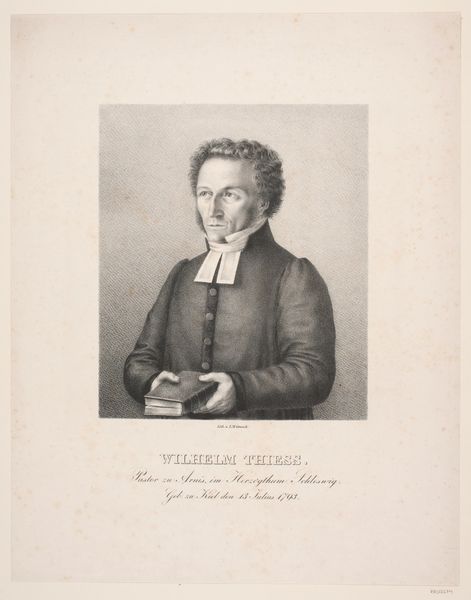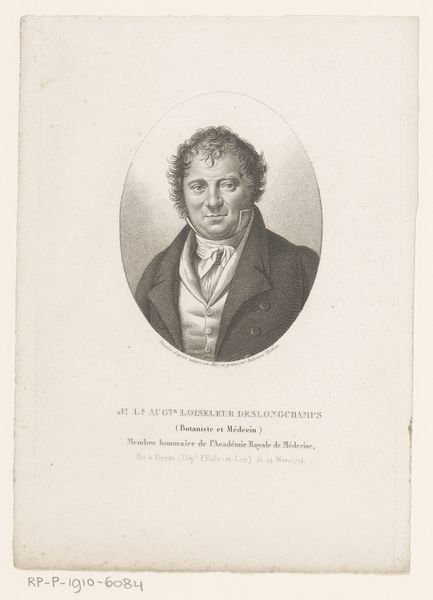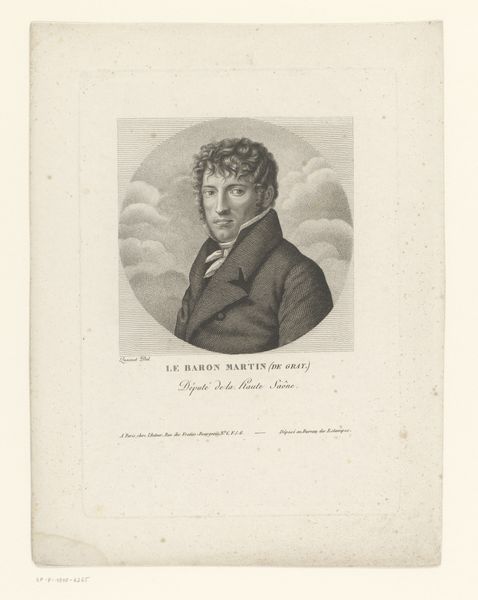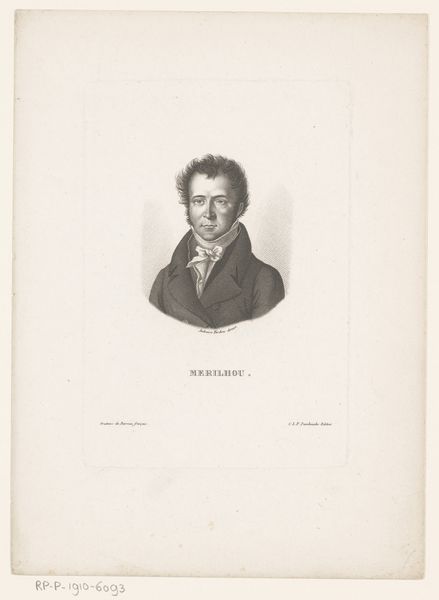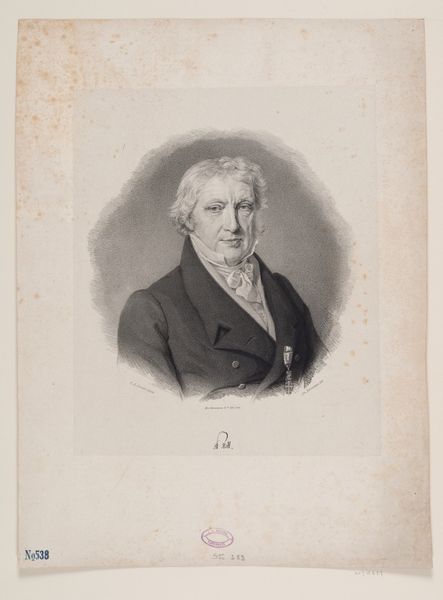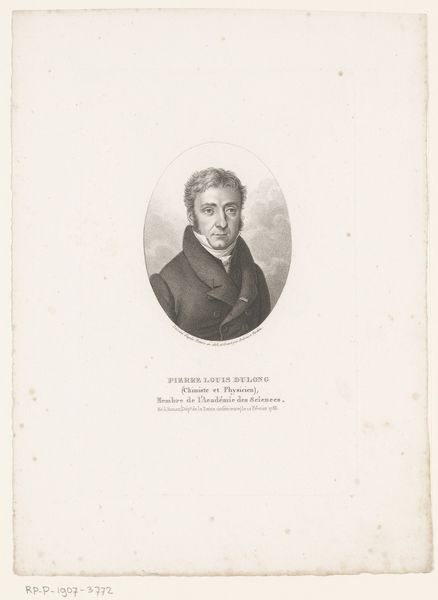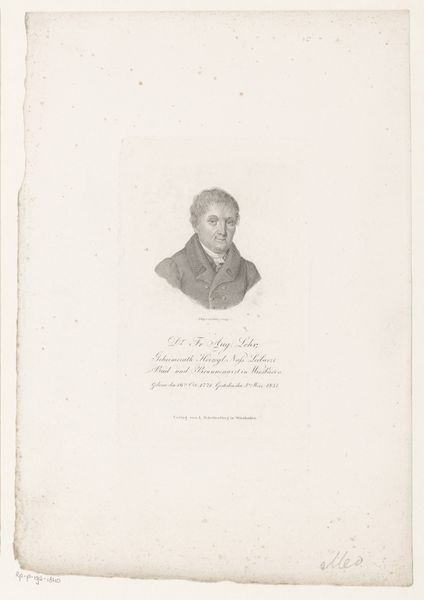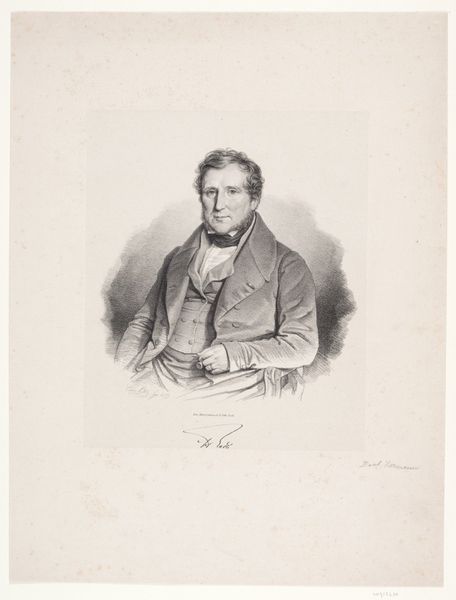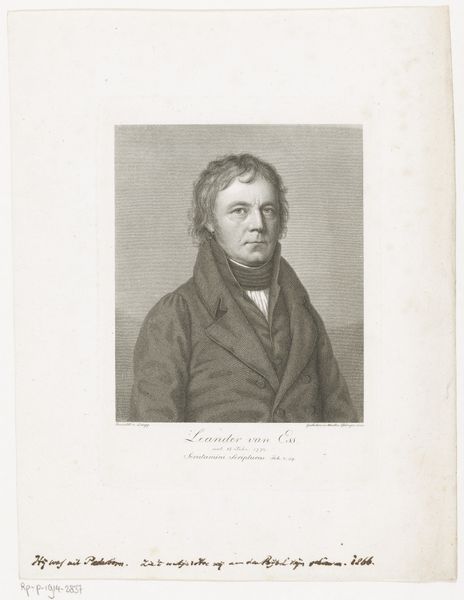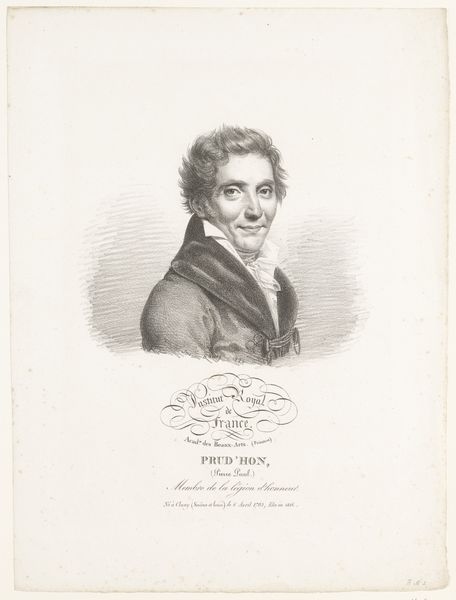
engraving
#
portrait
#
neoclacissism
#
aged paper
#
old engraving style
#
engraving
Dimensions: height 248 mm, width 174 mm
Copyright: Rijks Museum: Open Domain
Curator: Let's turn our attention to this intriguing engraving entitled "Portret van Guillaume Louis Ternaux," created sometime between 1782 and 1814, in the style of neoclassicism. Editor: Neoclassical alright. He certainly looks every bit the part, all stern-faced and holding a rolled-up document like it's the key to unlocking all the secrets of the universe. I’m picking up a serious 'don't mess with me' vibe. Curator: Indeed. He's presenting himself with considerable authority. Observe how the composition frames him within a perfect circle, reminiscent of ancient cameos, projecting that sense of classical order and control that neoclassicism aspired to. Even the old engraving style, like aged paper, adds a layer of gravitas. Editor: Yes, the circular framing adds to that effect! And all in muted grays; talk about keeping it classy… but slightly imposing! Almost as if he knows something we don't. What’s with the scroll? I’m dying to know what that’s all about. Is that his winning lottery numbers? The list of people who owe him favors? Curator: It is likely a symbolic reference to his official capacity. The inscription on the print tells us he was a deputy of the Seine and an Officer of the Legion of Honour. This engraving probably commemorates his service. These symbolic objects and insignia underscore status and virtue—powerful concepts in Neoclassical portraiture. Editor: Oh, Legion of Honor... a big deal! Still, there's something a little...melancholy about his gaze, isn't there? Even with the buttoned up uniform and impressive medallion, he looks…burdened. It's an interesting contrast with the almost aggressively formal presentation. It makes him…more human, somehow. Or maybe I am just projecting! Curator: That contrast is what holds my attention too. While adhering to Neoclassical conventions, the engraving manages to subtly hint at a complex individual. It reveals, I think, the internal tensions inherent to representing oneself in the era’s prevailing ideals of civic duty and moral virtue. Editor: Well, whatever the intention, this image makes me want to delve deeper into the man behind the baron. Who was he beyond the deputy and officer? The beauty of art; you are always left with wanting to know more! Curator: Precisely. It reminds us that every portrait, regardless of its style or era, is ultimately a negotiation between public image and private self.
Comments
No comments
Be the first to comment and join the conversation on the ultimate creative platform.
